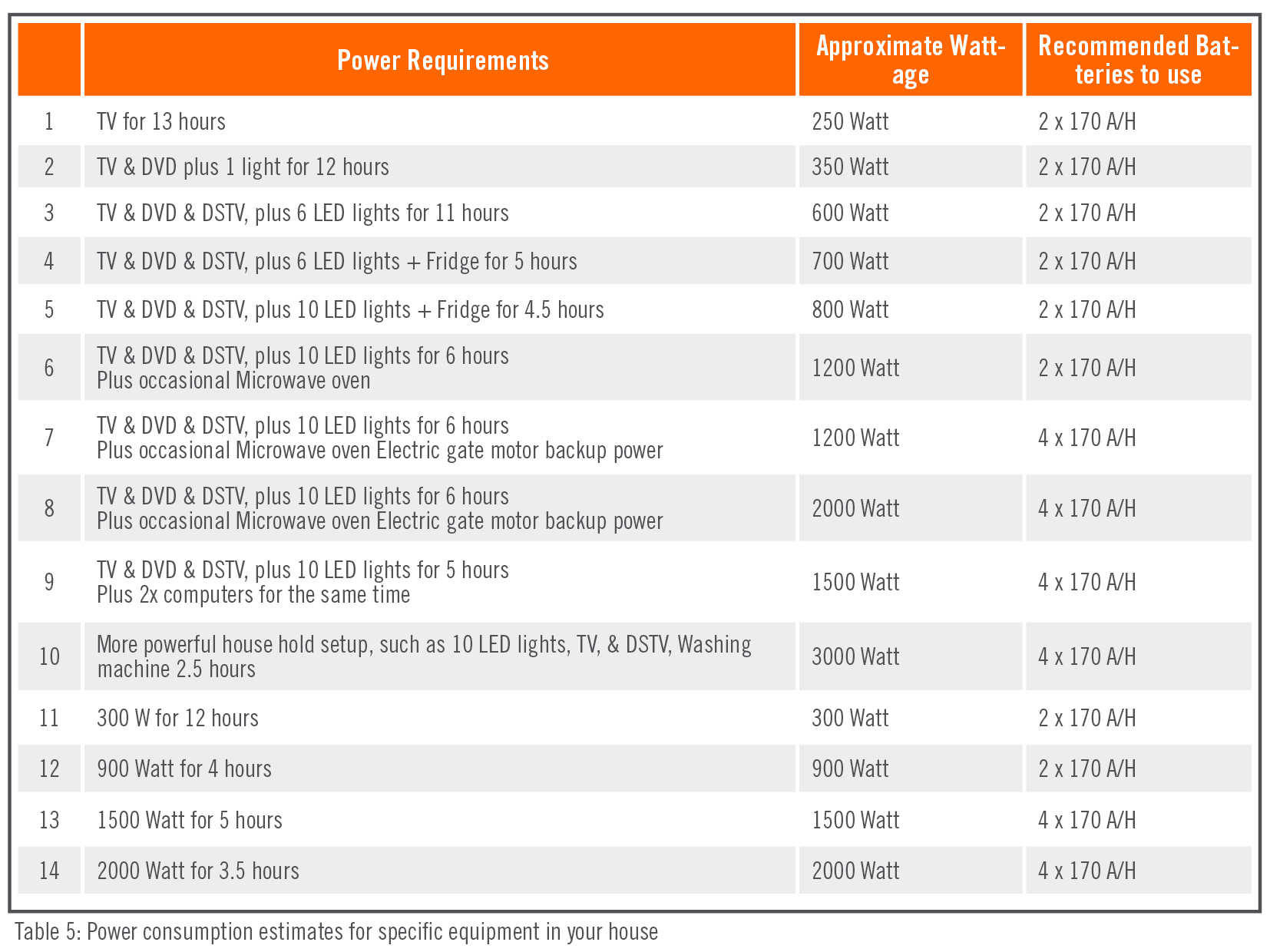STAY ALERT, STAY SAFE!
For a smooth and stress-free experience, always verify SA Home Loans branch and consultant details here on our official website. Remember, we’ll never ask for any fees or monies to be paid upfront.
What Size Inverter And Battery Do I Need? How Much Will They Cost?
From our previous article, you'll know what batteries and inverters do, now it’s time to work out what capacity is required to keep the home functioning during load shedding.
You can work it out, depending on whether you want to keep a few lights and the TV going, or still be able to do a load of washing.
How to calculate the size of the inverter
The size of the inverter depends on the power (in Watts) or the current (in Amps) of the appliances and equipment that you would like to operate. This can usually be found on specification plates on the equipment. This important information is the continuous rating in Watts/Amps and the peak/surge rating in Watts or Amps.
Inverters are rated in both continuous and peak power:
- Continuous power is the Watts the inverter can supply indefinitely,
- Peak power is the power that can be supplied briefly usually on start-up.
Equipment with induction motors such as fridges, freezers, aircons, pumps etc sometimes have a start-up peak of 3-7 times the continuous rating.
To convert Amps to Watts – multiply the equipment Amps x voltage (220) = Watts (approximate)
So, if you want to run an appliance with a continuous load of 5 Amps and a peak load of 15 Amps:
- Continuous power 230 VAC x 5 A = 1 150 Watts
- Peak/surge (start/inrush power) 230 VAC x 15 A = 3 450 Watts
You would need an inverter with a continuous rating of approximately 1 500 Watts and a peak/surge rating of approximately 3 500 Watts.
How to calculate the size of the battery
The size of the batteries that you purchase depends on the time duration you wish to have power. For example, a 7 Amp/hr (A/H) battery can run
- 7 Amps for an hour, or
- 14 Amps for 30 mins or
- 1.5 Amps for 2 hours.

How much do inverters and batteries cost?
Inverters can cost from R2 000 and as the wattage capacity increases, so the price increases. Each battery you need will be in the R6 000 to R8 000 range. This is a minimum amount. Battery prices can range way higher, so it’s important to do research.
Running a generator is another popular option for powering the home during load shedding. In our next article, we take a closer look at the different types.
Ready to invest in a power or water saving solution for your home? If you’re an SA Home Loans client, we'll help you finance it through your home loan.
